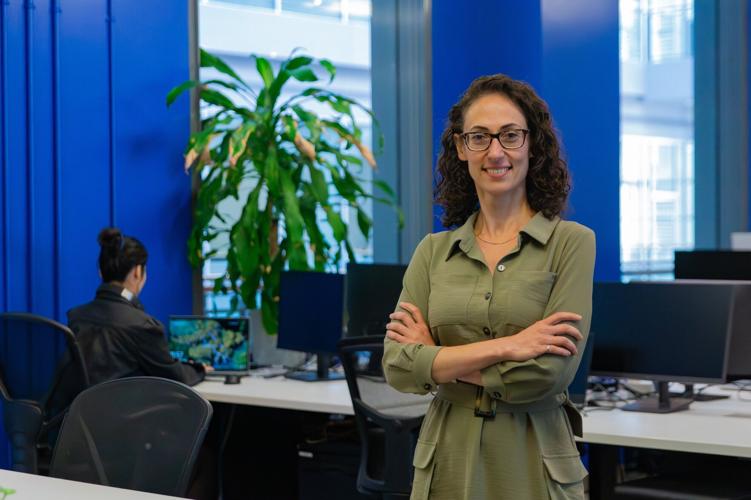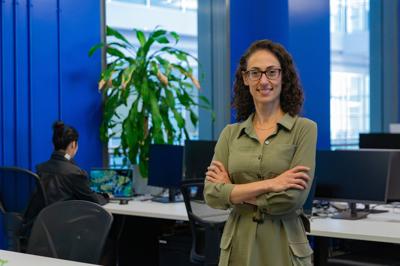In this series, we explore cool new jobs in the innovation economy.
Did you know that the pessary is among the ? Or maybe we should back up a little: Do you know what a is? ItÔÇÖs a device that supports a womanÔÇÖs pelvic organs, when her muscles are no longer up to the task as a result of childbirth or the natural course of aging. As devices go, itÔÇÖs ubiquitous: pelvic floor disorders are both progressive and common ÔÇö ÔÇö which is why the ancient Greeks were thinking about this problem . Their solution? Half a wine-soaked pomegranate.
While there have been many advancements in the intervening millennia, because of discomfort or irritation. To improve those stats, , a ╬┌Ð╗┤½├¢-based startup, introduced a personalized product last year. Cosm integrates ultrasound, AI and 3D printing to improve treatment options for precision care in gynecology, creating prosthetics tailor-made for the unique anatomy they support.
We spoke with Golafsoun (Goli) Ameri, the head of research at Cosm Medical, about how data can help deliver personalized care, how collaboration can be so rewarding and what itÔÇÖs like to see your work transform lives.
Why we need to be talking about pessaries
ÔÇ£Back in 2019, during CosmÔÇÖs early stages, I met a patient in her 30s. Her vaginal delivery caused pelvic organ prolapse and, as a result, she couldnÔÇÖt work, she became depressed and couldnÔÇÖt even lift her baby. It was a powerful reminder of the urgency and importance of the work we do.
ÔÇ£Pelvic organ prolapse and urinary incontinence are often met with shame, silence and limited treatment options, and they can profoundly impair quality of life and mental health. Most women are fitted with pessaries that come in a limited range of shapes and sizes. But up to 30 per cent of patients who opt for this treatment are unable to be successfully fitted with standard pessaries.ÔÇØ
How to build a better pessary
ÔÇ£Our platform uses data and advanced technology to deliver personalized care. The result is a uniquely tailored device that better aligns with a womanÔÇÖs individual anatomy and needs by integrating 3D printing, AI and biocompatible materials to help women get the treatment they need and slow down the progression of disease, improve their outcomes and reduce symptoms. Unlike traditional pessaries, which come in a handful of fixed options, our technology enables over 10 million possible designs. Most patients feel the benefits almost immediately and many women tell us their pessary has been life-changing.ÔÇØ
What itÔÇÖs like being lead scientist
ÔÇ£No two days are the same! On the research side, which I love, I work very closely with our clinical and academic partners, and IÔÇÖm running several clinical studies on the novel devices or novel indications weÔÇÖre working on. Because this field has been so underresearched, everybody wants to help, and everyoneÔÇÖs driven. ItÔÇÖs very positive. I love our collaborators.
ÔÇ£And on the patient side, IÔÇÖve had the privilege of being present in almost every single patient visit that weÔÇÖve had in our clinical studies so far.ÔÇØ
What drew her to the field
ÔÇ£Growing up in Tehran, I was always very interested in science. I loved math. I was fascinated by physics. All I wanted to do was help humans.
ÔÇ£When I was 17 and in my last year of high school, my mom broke her neck and she almost died. She had a piece of broken bone that was pointing at the spinal cord. At the time, (the imaging technology available) wasnÔÇÖt high enough resolution to see that little piece of bone and I remember thinking, ÔÇÿI wish there was something that you could just see the inside of the body.ÔÇÖ
ÔÇ£I did my undergraduate in electrical engineering and masterÔÇÖs in medical physics at (what is now called) TMU, and my PhD in biomedical engineering at at Western University ÔÇö┬áitÔÇÖs one of the worldÔÇÖs top imaging institutes. The focus of my research was augmented reality ultrasound guidance to develop advanced visualization to help with surgical or interventional procedures. My project was guiding needles into the spine for epidural injections because thatÔÇÖs currently done blindly. We invented a very small ultrasound that we put at the tip of the needle. Basically, our needle could see where it was going. It was very cool, really cutting-edge technology.
ÔÇ£After I finished my PhD, I attended the conference, where I met , the founder and CEO of Cosm. We got to talking, and he said that he wanted to start a company to help women with pelvic organ prolapse and incontinence. That was in May 2018, and we started working on Cosm that September.ÔÇØ
WhatÔÇÖs next for Cosm Medical
ÔÇ£Our research is expanding across the continuum of care for pelvic health. We want to see if we can prevent pelvic floor disorders to some degree. Can we intervene in the postpartum phase, so that we can help tissue heal better? Can we intervene after pelvic repair surgery?
ÔÇ£We have several exciting clinical studies on the go, and weÔÇÖve started working on novel devices for supporting the pelvic floor post-surgery. We also are launching our product in the U.S. later this year ÔÇö another major milestone.ÔÇØ
Why the world needs more people like Goli
ÔÇ£Pelvic floor disorders is such an understudied problem, it affects millions of women, yet it remains underserved. ThereÔÇÖs a huge opportunity to make a meaningful impact. There are so many aspects of womenÔÇÖs health that need attention and more research. ThereÔÇÖs room for a lot of people.ÔÇØ
As told to Dominique Ritter.
Dominique Ritter writes about technology for┬á. Torstar, the parent company of the ╬┌Ð╗┤½├¢ Star, has partnered with MaRS to highlight innovation in Canadian companies.






























To join the conversation set a first and last name in your user profile.
Sign in or register for free to join the Conversation